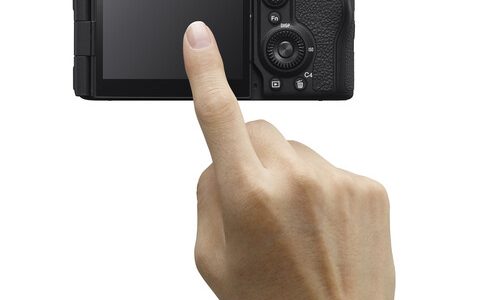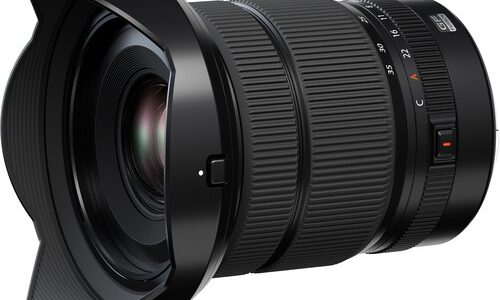



This article will be the first of a series of lens reviews this autumn, covering new releases and a few old favorites from Zeiss, Sony, Sigma and Nikon (Canon, I’d love to look at your system, too – but I’ve had no luck getting an R5 body and some glass). We’ll start off with a benchmark lens, literally the finest lens I have ever handled on any camera, any format. That lens is the Zeiss Otus 85mm (to give it its full name, the Carl Zeiss Apo-Planar T* Otus 85mm f/1.4 ZF.2). Starting with the Otus sets a top end for all other lenses that pass through here. Nothing I’ve been looking at so far is capable of what the Otus can do as far as raw image quality, and I don’t expect to see anything passing through this fall that quite measures up. The images here are from a lovely trip with the Otus to New Hampshire’s Pemigewasset Wilderness in the beauty of Autumn – being landscapes, they’re all at middle apertures, between f4 and f8… All are at ISO 64 on the Z7, and they are lightly edited in DxO Photo Lab – you’re not going to use an Otus to shoot unedited JPEGs, so why review it that way?
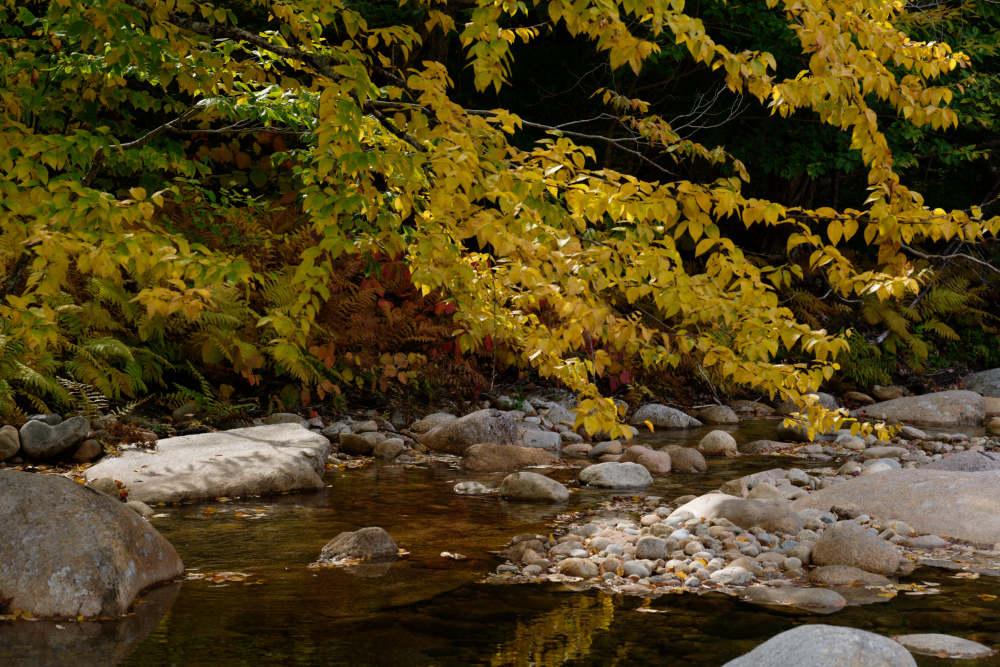
I tested the Otus on my Nikon Z7 with the FTZ Adapter, probably the ideal combination for an Otus. The other possibility would be an A7r IV with an adapter to either Nikon or Canon mounts (the two mounts the Otus comes in). You want the highest resolution camera you can find, and you want a mirrorless camera for all the focusing aids like magnification and peaking. A D850 in live view would work just as well in many ways, but the photographer would be limited to the rear screen only, and the Z7 stabilizes the Otus, which the D850 can’t do. The Otus is manual focus only, and it has an extraordinarily long focusing throw of around 270 degrees – close to one full turn, much like a cinema lens, allowing it to be focused very precisely (in some cases, to the millimeter). The problem is that the focusing screen in a modern DSLR is nowhere near that precise. All modern focusing screens are optimized for high brightness with autofocus lenses, not for precise manual focus. The only way to focus an Otus correctly using a stock camera is with a magnified electronic view (with peaking to help), and a mirrorless camera lets you do that through the viewfinder. The other option (which I’ve never physically seen, let alone used with an Otus – I do know it exists) is a D850 with a non-stock focusing screen. Only a D850, not “any DSLR”. Why would one use a $4500 lens that is incredibly slow to use but has fantastic resolution and microcontrast on anything less than the highest image-quality body available?

The Otus is an absolute joy as a mechanical object – the focusing ring is a thing of beauty, with near-perfect damping and a wonderful feel to its rubber grip. It feels even better than the grand old Zeiss lenses for Hasselblad V, previously the best focusing rings I’ve handled (I’m not a Leica shooter, and never have been). I wonder about a cinema lens like a Zeiss Master Prime? Are they built like this? Even the lens hood is a beauty – a big, solid piece of metal. If you want mid-20th Century mechanical precision, here it is in all its glory. Zeiss has been building the finest optics in the world since 1848, and they poured all that knowledge into this lens. Thoughtfully, although it’s a manual focus lens, it’s fully electronically coupled – it works perfectly with modern cameras, allowing electronic aperture control and reporting taking aperture correctly, and produces full EXIF data. Many manual focus lenses are uncoupled, often not even working with camera aperture controls, although few of those uncoupled lenses cost $4500.

I can say with some confidence that there is no other still camera lens (except another Otus in a different focal length) that can be focused like the Otus can – I was literally making adjustments of millimeters in the focal plane, and that can make a difference with an 85mm f1.4. Autofocus is generally not THAT precise, not least because the focus point indicator isn’t that good. Even the smallest precision AF points have a tiny bit of slop in them, and you can manually focus the Otus exactly where you want it. Of course, there’s no such thing as focusing an Otus quickly – you could do it roughly, but why use an Otus, then! No attempt at manually focusing an autofocus lens, with their poorly damped focusing rings and 30 to 90 degree focus throws, is going to come close.
The image quality is as beautiful as the construction. When I looked at some of the images I had from the Otus, I’ve never seen microcontrast like this before. It reminds me of the best of the grand old Zeiss glass for Hasselblad, but even better, and with the advantage of a modern image sensor behind the lens. There is a beautiful “glow” to upper-end Zeiss glass as well. It’s very hard to reproduce the look of an Otus in a 1000-pixel web image, and I probably haven’t succeeded – but rest assured that this lens wowed me when the images came up on my EIZO CS2740 reference monitor. I’ve never seen anything quite like it, and I’m looking forward to making very large prints from these images (they’ll go 40×60” with ease). The bokeh is stunning, too – I’m getting tired of saying “best I’ve ever seen”, but it’s true. The Otus is VERY close to distortion-free, but that’s true of most of the 85mm “super” lenses of the past few years. Zeiss calls it an apochromat (free of chromatic aberration because all colors of light focus on the same plane) and it is either fully apochromatic or so close it doesn’t matter. Not all less expensive lenses that are labeled as apochromatic are even close, but the Otus is.

One of the most interesting features of the Otus is the way it slows the photographer down. That focusing ring calls out “get it right”. It requires careful handling for its best image, in a way that most lenses don’t. Not only is it manual focus, it has the extraordinary focusing precision. When I had the Otus on the camera, I was choosing my focal point far more carefully than I usually do, although I wasn’t trying as many different focal points. It encourages a different style of photography, much like shooting medium or large format does.
Even with all of this going for it, the Otus is not for most of us most of the time. It’s a huge, heavy, manual focus lens that costs $4500. It’s not a weather sealed lens, which is a consideration for landscape photographers. It’s the finest 85mm there is, but there is a lot that comes relatively close for a small fraction of the cost and inconvenience. At 1140 grams, it’s nearly twice the weight of the Sigma 85mm f1.4 DG DN (625 grams), and it is almost 4x the price. Is the Zeiss a better lens? Yes it is – it is the finest lens I have ever handled. Is the Sigma also a very, very good lens? Yes to that as well. The beautiful Otus is squeezed from both sides – there are lenses like the Sigma, the Sony G-Master and the Nikon 85mm f1.8 S nipping at its heels for image quality for a fraction of the weight and price. I’ve had both Sony and Sigma through here, and both are also excellent lenses – neither quite as special as the Otus, but they are both closer than their price and convenience would indicate. I haven’t been able to come up with a review sample of the 85mm Nikkor, but the 50mm version is an incredible lens.
On the other side, the Otus is squeezed by the GFX 100. A Z7 and a set of three Otii (28, 55 and either 85 or 100) will come in around $16,000. A GFX 100 with the 30mm, 63mm and 110mm lenses is around $17,000. Interesting choice… The absolute ultimate in lens rendering versus very, very good lenses at twice the resolution? The Fujifilm system is actually lighter and more convenient – not something one often says about a GFX 100.

Who will actually own an Otus 85? Maybe some portrait photographers who want its beautiful rendering and can live without autofocus. Maybe a landscape photographer who loves the focal length, doesn’t mind the weight and is willing to pass up weather sealing for the beauty of its rendering. Most portrait photographers are going to want AF, and most landscape photographers will choose the lighter, sealed Sony, Sigma or Nikkor. Most of us will never own this special lens – but it could be worth it to rent it for a particular shoot where its beauty shines through, especially if you own and know its partner the Z7. It’s well worth renting to experiment with its particular photographic style, and it’s worth waiting until you have just the right contemplative subject for it.

There are a couple of pieces of news worth commenting on. First is Apple’s big day. iPhone Day was Oct. 13 this year – although still no sign of Apple Silicon Macs, which I personally believe will be more important to the Luminous audience than any update to the iPhone. Whether Apple Silicon proves to be a good thing, a bad thing, an irrelevant thing or some combination remains to be seen, but it has the most potential for positive and negative disruption in serious photography of anything Apple has done in decades.
It is odd for the iPhone to share an article with the Zeiss Otus 85 – the Otus is one of the most contemplative lenses in existence, favoring special photo trips and special subjects, while the iPhone is the camera in your pocket – the one that is almost never the best camera you own, but might be the one you have with you. The Otus calls out “focus me carefully and compose with love, the goal is a large print”, while the iPhone says “snap away, it’s all for the ephemerality of social media”. They speak to different impulses within us, and it’s worth considering what a bit more Otus, and a bit less iPhone, in the world might mean. I’m always on the lookout for products that do what the Otus does – that cause us to pay a little more attention to the world around ourselves. I admit to a personal bias not against the iPhone itself (which I own and use as a valuable tool), but against the online world of influencers for which the iPhone is gateway and avatar.

The iPhone camera, however, is used for a huge number of photographs every year, and is worth taking a look at every time it is updated – if for no other reason than that many Luminous readers use it as a convenience camera, and many of our friends and family members use it as their primary camera. This year brought a couple of meaningful, and not altogether expected, updates to the iPhone’s camera system, along with one other update that (carriers willing) could be exceptionally important to a limited number of photographers who use wireless uploading from urban areas where 5G coverage exists. Perhaps of most photographic note is the new sensor on the iPhone 12 Pro Max. Unfortunately, the most important changes are only on the most expensive model and only on the main camera (what Apple calls the wide camera). It’s the first real, image quality focused move in camera hardware from Apple in a number of years. iPhone image quality does keep improving every generation, but most of the improvements have come through computational photography, not through actual changes in how accurately the photons are collected. The new camera/lens system doesn’t look terribly different at first glance, but it has a couple of major changes that have the potential for significant image-quality improvements. There is one change that buyers of all the new iPhones get – the main camera lens is 1/3 stop faster at f1.6 instead of f1.8, and it’s a seven element lens (they are traditionally six elements). Otherwise, it appears to be essentially the same camera setup as last year’s, with the iPhone 12 and 12 Mini getting the dual camera setup from last year’s iPhone 11, while the iPhone 12 Pro gets the triple camera from the iPhone 11 Pro plus a LIDAR system that helps with autofocus, although its major purpose is augmented reality. The LIDAR is limited to the two Pro models. The Pro models also shoot something Apple is calling Apple Pro Raw, which is supposedly a raw file with Apple’s computational photography tricks baked in. How is that really a raw file? The closest thing I can think of is the Olympus and Panasonic cameras that composite high-resolution multi shot files in camera and export a raw format file that exceeds the resolution of the sensor. The big change in the camera comes only if you spend at least $1099 and up to $1399, depending on storage, on an iPhone 12 Pro Max. It looks like it has the same triple camera setup plus LIDAR as the 12 Pro, but there are three important differences. First, what Apple calls the telephoto camera is actually a meaningful portrait lens, rather than simply a standard lens that is the longest of three cameras. Previous iPhones have used a 52mm equivalent lens for the “telephoto” camera – that’s a standard lens by any rational definition. The longest lens on the iPhone 12 Pro Max is a 65mm equivalent – at the short end of portrait lens territory, but not quite a standard lens. The little bit of extra focal length is welcome for portraits and mildly distance-compressed landscapes, although it won’t do anything for sports or wildlife.
The second difference is that the wide lens (the middle focal length of the three options – 26mm equivalent) is equipped with a sensor-shift image stabilization system that functions similarly to the in-body image stabilization used by many popular mirrorless cameras and a few DSLRs. Apple has offered optical image stabilization since the iPhone 6 Plus but it has always operated by shifting lens elements (the same way a stabilized lens works). Either approach can work very well, and the two combined are generally the best of all. It isn’t clear from the skimpy published specs, but the wide camera on the iPhone 12 Pro Max may be using a dual IS system.
The third difference is potentially a really exciting one. The iPhone 12 Pro Max has a much larger image sensor, with larger pixels, than we’ve ever seen on an iPhone before. The big-pixel sensor is only on the wide camera which gets the fancy image stabilization as well. The other two cameras have to make do with standard-sized smartphone pixels. Apple, as usual, is coy about the details, but they do tell us that it is a 12 MP sensor with 1.7 µm pixels. A little bit of math suggests that it is roughly what is often called a ½” image sensor (for complex reasons having to do with how old tube television cameras were measured). Previous iPhones have had 1.2-1.4 µm pixels, so this is a real step up. It’s still clearly in the small-sensor class, but these are not only larger pixels than what you find on most smartphones, but actually larger than those on most compact cameras (apart from premium compacts like the Sony RX series , which tend to use so-called 1” image sensors). We are seeing ½” class image sensors on a few premium smartphones this year, and several of them are using the extra space to deploy bigger pixels instead of adding extra pixels.
A comparatively big-pixel sensor is certainly welcome, and it is by far the biggest move in physical camera hardware on the iPhone in years, probably going back to the addition of image stabilization on the iPhone 6 Plus. Assuming square pixels, which is almost certainly right, each of these pixels has a light-gathering area of 2.89 µm2, about one and a half times the area of the largest previous iPhone pixel (1.96 µm2), but still only about half the area per pixel of the popular 20 MP 1” type sensor found in the RX100 series and most other premium compacts (5.76 µm2). Ignoring a few small-sensored oddities like the Nikon 1 and Pentax Q series, the smallest pixels found on any interchangeable-lens camera are Canon’s new 32 MP APS-C sensor (10.18 µm2) followed closely by the 20 MP Micro 4/3 Same Old Sensor (11.02 µm2). The ubiquitous modern high-resolution Sony pixel found in everything from 26 MP APS-C cameras from Fujifilm to the A7r IV, GFX 100 and Phase One IQ4 150 measures 13.91 µm2, and the fattest “standard” pixel is the 24 MP full-frame pixel at 34.93 µm2. Of course there are a few odd cameras with even larger pixels – how about the A7S III, which matches the iPhone for resolution, but uses a full-frame sensor for an amazing 69.89 µm2 per pixel.
Even the big new iPhone pixel is still a small pixel compared to what we’re used to in non-phone cameras, only half the size of what’s in a premium compact, significantly less than 1/3 the size of even the tightest interchangeable lens camera pixel and barely more than 1/5 the size of the modern high resolution Sony pixel. It’s less than 10% the size of a 24 MP full-frame pixel and hardly over 4% the size of the jumbo A7S III pixel. It’s also a 12 MP camera, so it’s not a huge number of relatively small pixels.
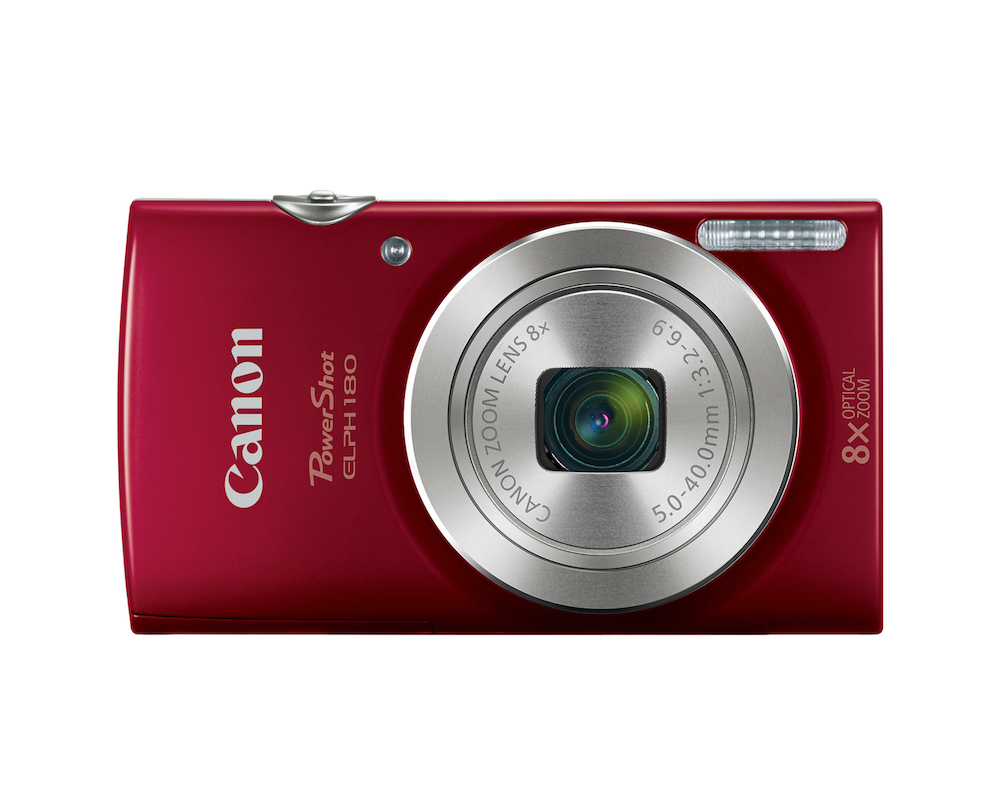
Before accounting for its computational photography chops, the iPhone 12 Pro Max’s sensor specs are significantly superior to standard 1/2.3” sensor compacts, which range from $60 junk cameras and $129 Canon Elphs on up to $1000 superzooms with 3000mm equivalent lenses. Yes, a lot of those 1/2.3” sensors are 16 or 20 MP to the phone’s 12 MP, but I’d far rather have fewer, larger pixels on a sensor less than 1”. The big iPhone’s specs are far inferior to the usual 1” sensor found in premium compacts, and a 1” compact starts around $400 for a deeply discounted Panasonic ZS100 or a Canon G9x mk II at regular price. You can easily pay iPhone 12 Pro Max-like prices well over $1000 for the latest version (mk VII!) of the popular Sony RX100 or for a couple of 1” models with very broad zoom ranges. Until now, an iPhone was basically a $100 camera with a heck of a computer doing the image processing (using very sophisticated software far better than any inexpensive compact camera has). Now, at least it is somewhere between a $100 camera and a $400 camera with a heck of a computer doing the image processing. The $400 camera has a far superior sensor and a much better lens, but the iPhone has massively superior processing hardware and software.
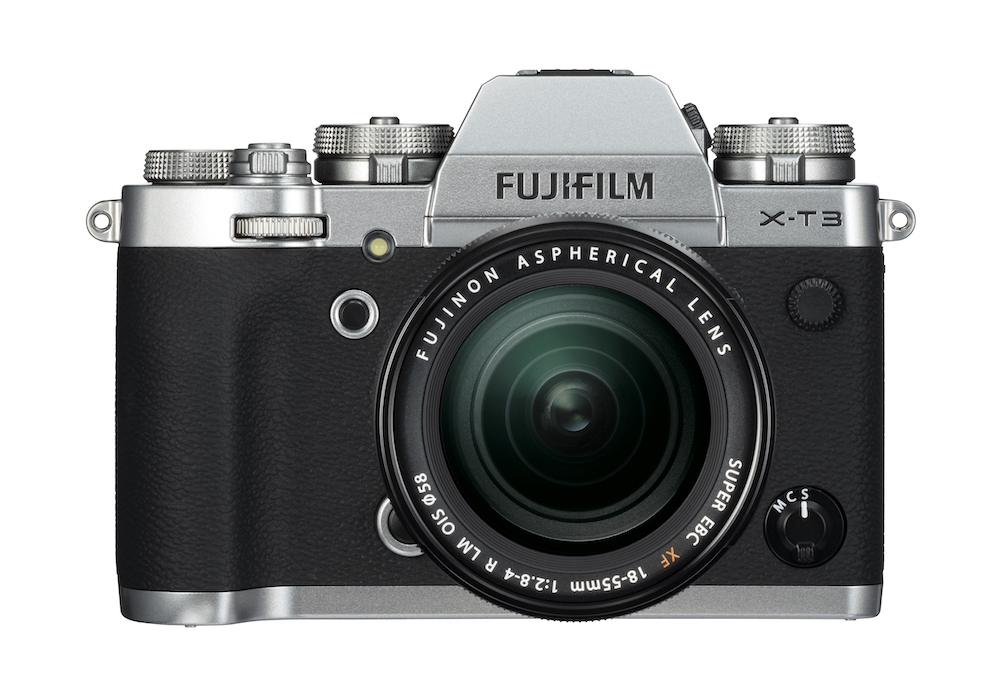
If you look at the iPhone 12 Pro Max against any non-phone camera in its price range, it is laughable. The choices in the $1100-$1300 price range include the best compact cameras around, many of which feature APS-C sensors, while others have 1” sensors and very long zoom ranges. If you’re willing to accept a bit more bulk, you can get a very competent 24-26 MP APS-C DSLR or mirrorless camera from the manufacturer of your choice. I’d personally choose a Fujifilm X-T3 or the brand-new X-S10 with the best APS-C sensor in the business and their beautiful little 18-55mm f2.8-4 zoom. The X-T3 doesn’t have in-body image stabilization, but it’s weather sealed, while the X-S10 has the opposite tradeoffs (their control schemes also differ somewhat). I’ve made awfully nice 24×36” prints from the older X-T2 with that lens – they don’t look quite as good as Z7 or A7r mk IV prints at that size, but I’ve shown them in galleries without a problem.
Don’t like Fujifilm? No problem… A Sony A6400 with a 18-135mm lens fits the budget, as does an Olympus E-M5 mk III with the lovely 12-45mm f4 Zuiko PRO or a Nikon Z50 with a couple of lenses. If you’d prefer a DSLR, either Canon or Nikon will happily sell you their latest upper-end APS-C DSLR with a kit lens (the EOS 90D or Nikon D7500), and Nikon will throw in a 75-300mm lens as well. If you like oddball cameras, a durable Pentax KP with your choice of one of several lenses is yet another option. Full frame costs closer to $1700 to get started with an entry-level body and lens from Canon, Nikon or Sony, but that’s not a huge additional cost over a $1400 iPhone with maximum storage.
Of course an iPhone is many things besides a camera, so comparing it to dedicated cameras in the same price range isn’t fair, assuming you don’t already have a phone you’re happy with other than the camera. What IS closer to fair is looking at a lesser iPhone plus a dedicated camera. If you’re happy with a smaller phone, a brand-new iPhone 12 Mini starts at $699, $400 less than the cheapest iPhone 12 Pro Max – enough to buy a nice 1” compact in addition. Last year’s iPhone 11, still a very fast, competent phone with most but not all of the latest iPhone goodies, starts at $599 – the $500 left over is enough to buy an entry-level APS-C body and lens from Sony, Canon, Nikon or Fujifilm.
The biggest new feature in this year’s iPhones is 5G. Under the right circumstances, 5G data is incredibly fast – as fast as gigabit Ethernet. The right circumstances are very, very rare at the present time, and will never be common. Millimeter wave radio signals, what the really fast 5G variants use, are very short range, and they are easily blocked by any obstacle. 5G also includes longer-wavelength standards that are more robust, getting into buildings and travelling miles instead of hundreds of meters, but they are more like a fast version of 4G than Ethernet speeds. Right now, millimeter-wave 5G exists in some parts of the downtown areas of many major cities, but it is unpredictable on a street by street and even a block by block basis, and it only penetrates from the base station probably mounted on a telephone pole to the front of a building. It also exists inside a few large buildings like airports, train stations and stadiums. Its short range means that it will never exist outside of dense urban areas, except in a few buildings and vanishingly few outdoor areas (high-end ski resorts, etc.).
Where its extremely high speed does matter to certain photographers is that a lot of news is made in some of the few places where it is common. Most major sports stadiums either have millimeter-wave 5G or soon will – sports photographers take note if they can reliably tether their camera to their phone, and won’t be slowed down by data caps. The parts of Washington, DC with coverage include much of Capitol Hill and the area immediately around the White House – especially useful to press photographers covering national news. I haven’t seen international maps, but I suspect that parliamentary buildings and sports stadiums are likely spots. Note that ONLY the US market (and possibly Canada, which often gets US versions of electronics) iPhones get mmwave at all. In the rest of the world, the iPhone gets 5G, but ONLY the “enhanced 4G” version that most of us will use most of the time anyway.
For most of us who are not professional sports photographers or national photojournalists, 5G will manifest as somewhat faster 4G LTE, not a game-changer. Even if you live in a part of Manhattan where mmwave exists, it doesn’t work indoors except in the few buildings with indoor base stations. How often do you need to upload your photo library while walking down the street? If you work for Sports Illustrated, “while sitting in Yankee Stadium” IS a game-changing use case (hopefully they have that short range targeted at the camera pits), but for most of us, it’s not. Grabbing a few gigs of data at the airport (a movie to watch on the plane?) is nice, but you’d have to be an extremely frequent flyer before it really mattered.
Apple is yet again claiming the fastest processor in any smartphone, and a big leap over its predecessor. They’ve usually turned out to be right, and recent models have had burst speeds in the range of a very small and light laptop, although the computer can sustain a much higher speed than any phone due to cooling. That’s probably even more true now than it was last week, because the iPhone has just gotten faster, while laptops really haven’t in a while.
How much do we really care about speed on a phone as photographers? Ignore this if you also, separately, do something really speed-intensive on your phone (I don’t happen to) – my comments are only about the activity that LuLa readers share. Very few of us do intensive photo editing of non-phone photos on our phones, for a couple of reasons. It’s not easy to get full-resolution raw files onto a phone, and even the largest storage would fill up quickly if you could. Even assuming you could get the files on there, the fastest phone would be likely to thermally throttle pretty quickly under any serious editing. Phone-based editing is likely to use proxy files for quite some time to come, and any modern, fast phone is fast enough for that. A phone is also far from ideal as an editing interface (or I’ve become a curmudgeon younger than scheduled?) – there is a reason why we have big, calibrated monitors, pointing devices better than fingers, etc.
What I really do use a phone for as a photographer is weather, sun and moon tracking, navigation, etc. I upgraded last year from an iPhone 6S+ to an iPhone 11 (the basic non-pro model), and the 11 makes a huge difference over the four year old phone. It’s faster, smoother and has a much longer battery life. Given my use, the strategy I’m taking with iPhones is to upgrade once each major generation (not always obvious, especially at first, but roughly three or four annual releases). At least in retrospect, it’s relatively clear that the iPhones 6, 6S, 7 and 8 formed a generation. They were all around the same size (and substantially larger than previous iPhones), and they had a lot of similar technologies. The X, XS (and variants) and 11 family are also a clear generation – the Face ID phones with much sharper screens and multiple cameras. There were two generations prior to the iPhone 6 – the original iPhone/iPhone 3G/3GS were one generation ( pre-retina iPhones) and the 4/4S/5/5S were another (the small, early Retina phones).
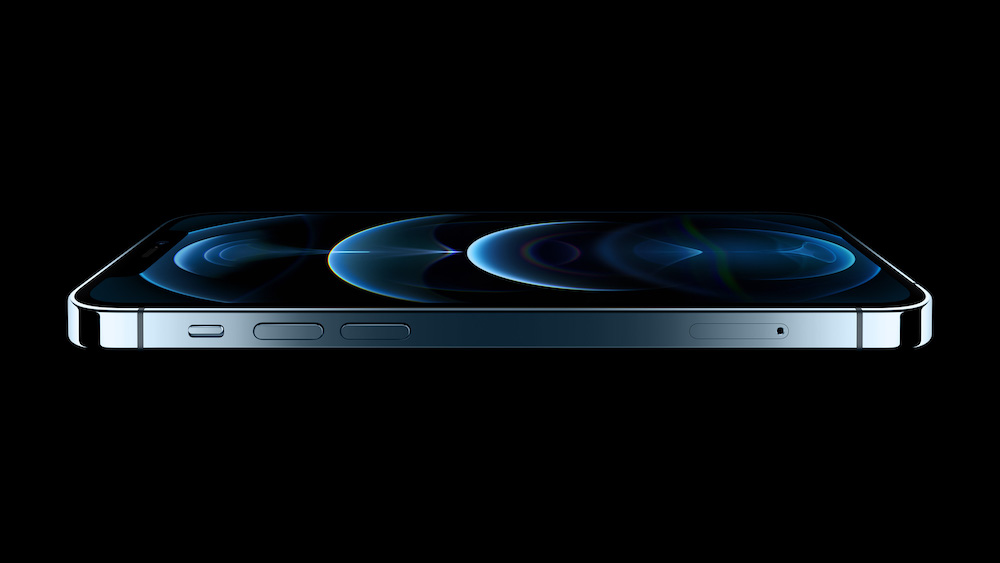
It’s not yet clear whether the 12 models will join the generation founded by the iPhone X or found one of their own… If you need an iPhone this year, or if you have an iPhone 8 or older, it looks like a great upgrade. If you already have an iPhone from the past couple of years, it’s a lot like the great phone you have unless you specifically need something that’s new this year. If you’re contemplating switching from Android, that’s really a very personal choice (and there are plenty of writers on the Web who have used both). I’ve been an Apple person for 40 years (going back to Apple ][+ computers in elementary school), and prefer their products for reasons ranging from ease of use to privacy, security and reliability.
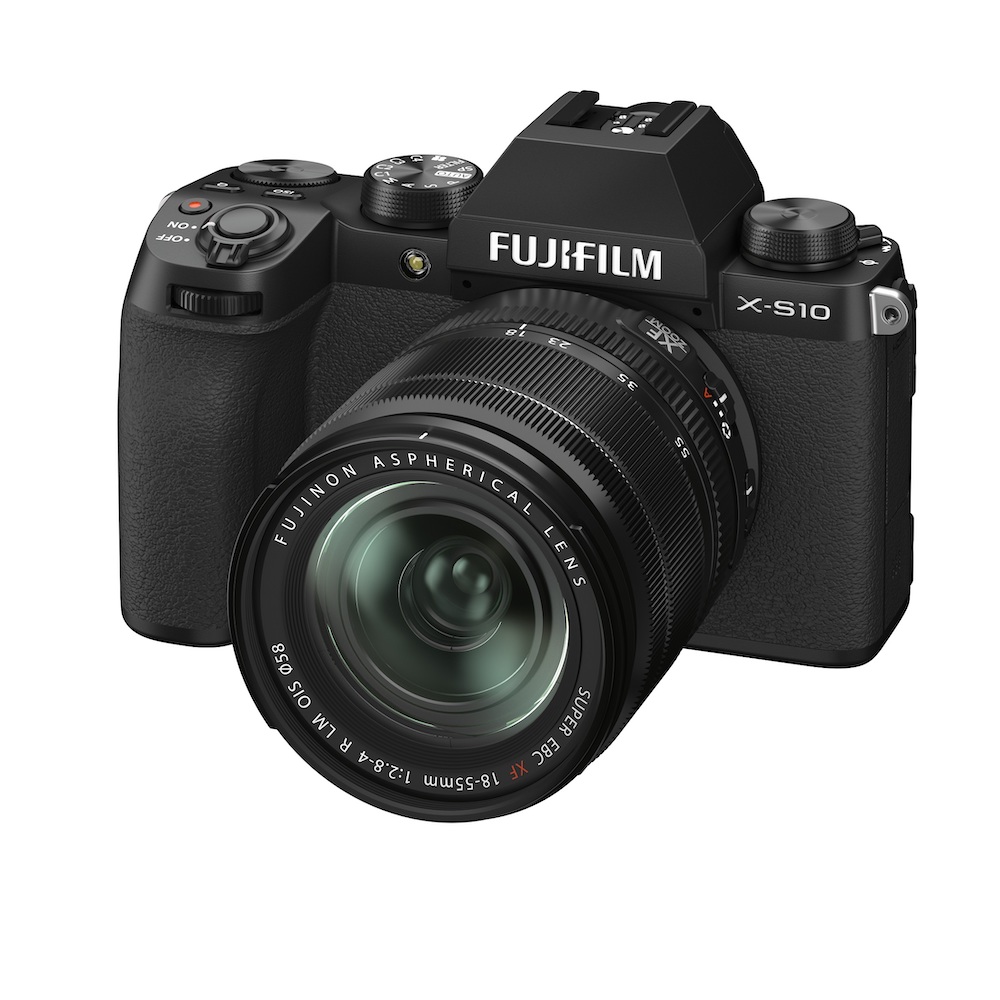
There have been a number of other introductions lately – maybe the most significant is the Fujifilm X-S10 briefly mentioned above. $999 for a Fujifilm body with all the latest goodies ($1399 with the venerable, but very sharp, 18-55mm f2.8-4, $1499 with the newer 16-80mm f4). The headline features include in-body image stabilization (IBIS) and the 26 MP sensor that is almost certainly the best crop sensor around. It’s also the smallest and lightest Fujifilm body with IBIS, by about 25%. It doesn’t have the classic “film SLR” Fujifilm control scheme, going with standard control dials instead, although it DOES have a full complement of Fujifilm’s best film simulations, including a brand-new auto mode that picks a film simulation by subject matter. Those who have seen it say that it is extremely comfortable to hold and shoot. Video modes look like most of what the X-T4 has, although lacking 4K60p, and that camera is one of the best hybrid choices around. The only two disappointments on the spec sheet are the old NP-W126S battery (not the new high-capacity unit from the X-T4) and the lack of weather sealing. I’m going to try and put one through a test this winter – it looks like one of the best APS-C options of 2020.
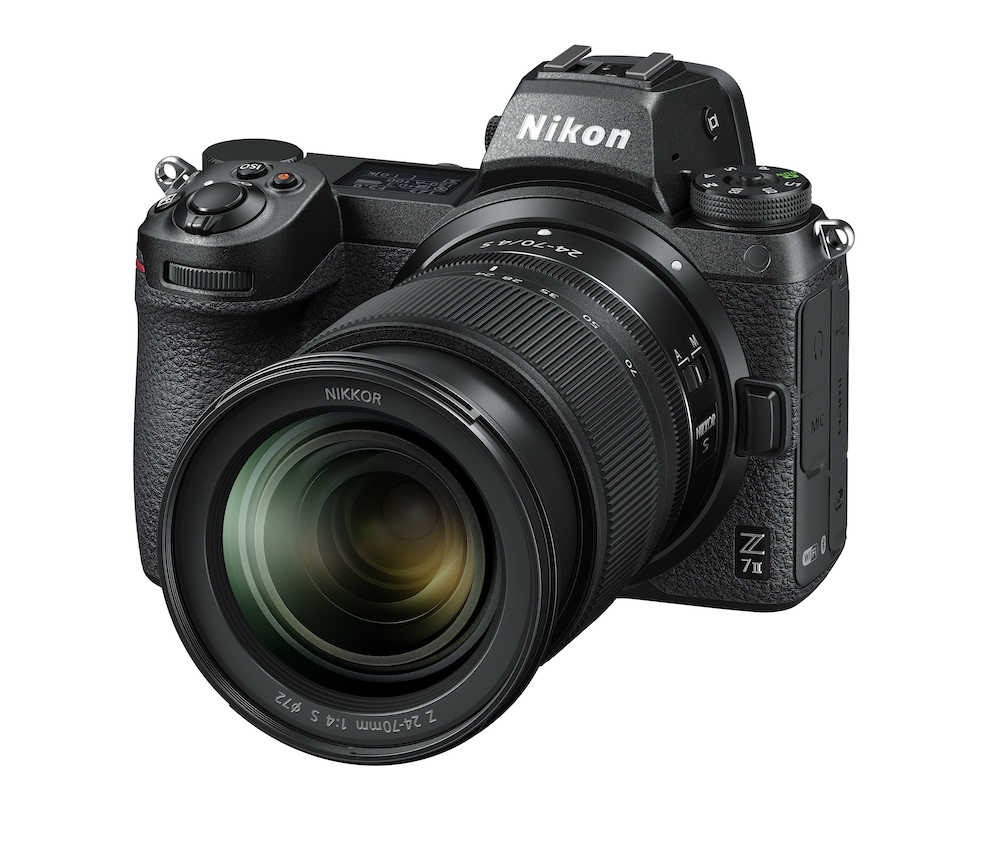
Nikon has updated both the Z6 and Z7 to Mark II status. They’ve fixed a lot of what people have considered “wrong” with the originals and added a few new features. In many ways, these are relatively minor revisions, but they fix quite a few rough spots, and Nikon has been doing a good job with their lens line. The headline feature is probably 4K60p video (although the Z6 II will need a firmware update to enable it). It’s worth remembering that, when the originals were released, 4K60p simply didn’t exist in a hybrid camera with a larger than Micro 4/3 sensor, with the exception of a couple of REDs and other things that really aren’t still cameras. The Sony A7S II doesn’t do 4K60p (the newer A7S III certainly does), and the Panasonic S1 is newer than the Nikons. Things like the X-T4 and the EOS-R5 are much newer than the first-generation Z series. The only way to get 4K60p in a hybrid camera in the fall of 2018 was the GH5, and that meant putting up with the Same Old Sensor for stills. Nikon is a bit late to the 4K60p party, but they’d have been VERY early if they’d managed it two years ago.
The next most important feature, and the most important for stills-centric photographers, is that the dual processors Nikon has included to allow 4K60p also enable some autofocus improvements and much deeper buffers. The original Zs were not slow cameras, but they were slower than some of their contemporaries, and the Z7 in particular has a relatively limited buffer depth. For the kind of photography for which a Z7 is appropriate, I’ve never really understood the concern (a 46 MP sensor lends itself to a more contemplative style), especially because it clears its buffer pretty darn quickly with the very fast XQD/CFExpress slot. Nikon is claiming around triple the buffer depth, along with significant improvements in tracking AF. Especially with the newest firmware, the originals were no slouches – but improvements are always welcome.
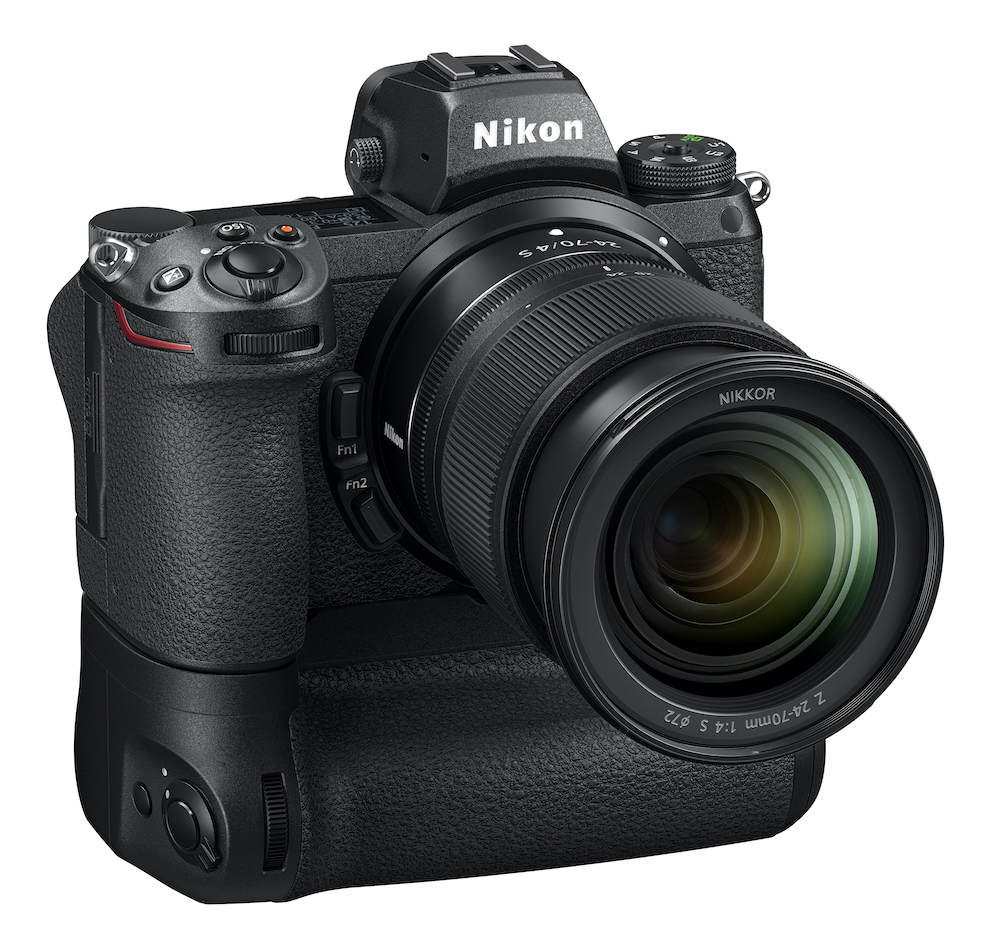
Several of the other new features fix real or perceived limitations in the originals that probably WERE design mistakes. The mk IIs FINALLY accept a real vertical control grip. There is absolutely no question that this should have been on the originals, and it’s a mystery that it wasn’t. Nikon’s been good at this with their DSLRs – why did they screw it up on the original Z series? They added a second card slot, although it’s a UHS-II SD slot, not another CFExpress slot. The second slot has caused a lot of sighs of relief on the Internet, although it may be a mixed blessing. My Z7 writes to its card a LOT faster than my A7r IV does – enough so that the Sony sometimes causes me to worry for a second – this is the speed of the newer format (even using fast Sony Tough cards in the Sony body). The SD slot allows photographers to put much slower memory in the mk II Nikons, and people may not like the performance impact, especially if you don’t use fast cards. You could give the performance from that nice new dual processor right back with a fusty old SD card!
No, it’s not a new sensor – but what would Nikon have used? Now having thousands of images on both the Z7 and the A7r IV, with a variety of lenses on both bodies, I’m quite confident that image quality is pretty much a wash. I’ve gotten very comfortable with the Sony in the past few months, and I was already very comfortable with the Nikon. Which camera I grab is now a matter of what lens I am testing – I really love the images from both. These are the two best high-resolution sensors in the world today (short of the GFX 100, which uses an oversize variant of the A7r IV sensor), and either one will make your 44-inch printer very happy. The Sony has a bit more resolution at the margin, and the Nikon has slightly, but noticeably better shadows at ISO 64. A switch to the A7r IV sensor would have been a lateral move, not an upgrade. A Nikonized version of the A7r IV sensor with ISO 64 might be an improvement on both, but it doesn’t exist (yet?). The Z6/Z6II sensor is the newest version of the ubiquitous 24 MP full-frame sensor, and it’s probably the best balanced sensor in the world for stills, video and reasonable file sizes. Its competitor as an all-arounder is the newest 26 MP APS-C sensor (you lose a bit of image quality for big prints, but get more compact bodies and lenses). Sony may leapfrog the 24 MP FF sensor in an A7 IV, but the just-released A7c uses essentially the same sensor as the Z6 line.
Let’s see if Nikon can ship these in a timely manner! There have been a number of delayed launches from them lately, notoriously including the 70-200mm f2.8 for the Z series. We probably aren’t looking at any more Nikon cameras this year, but a couple more Z lenses are possible, maybe including a 100-400mm. I’d love to see an impossibly compact 100-400mm PF! 400 and 600mm primes have been added to the Z-system roadmap with no release date (will these be super-fast, or slightly slower but very compact PF designs)? All the long lenses are very interesting if they can ship them, because the Z system is already in good shape below 100mm for the most part.
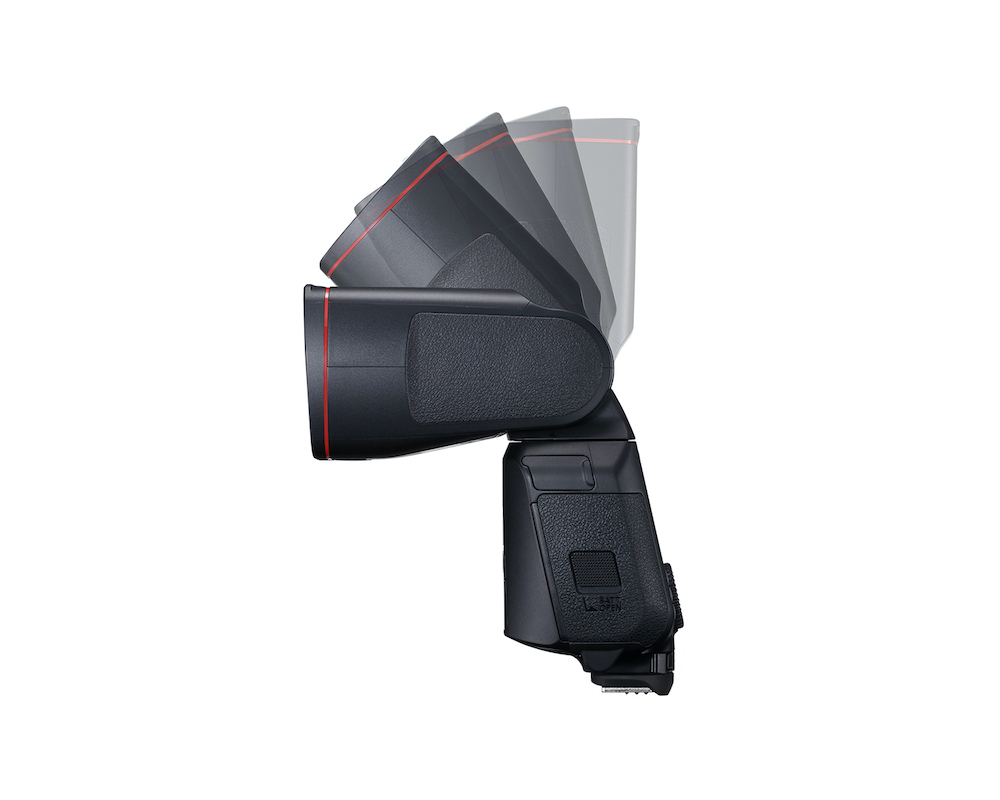
The manufacturers have been busy (or are getting COVID-delayed product out ahead of the holidays). Canon has released an EOS-M50 mk II. My brief take on it is “it’s an M, and that lens line is a dead end”. Their efforts are clearly going towards the R series, and there really isn’t much in the M line unless you have a special fondness for f6.3 zooms. They’ve also released the Speedlite EL-1, a $1000 (!!!) on-camera flash. It has some interesting features, including a VERY low minimum power output and a lithium-ion battery, but I thought only Profoto dared charge that much for an on-camera flash. I’ll let writers who use flash seriously tackle that one… I find the new mini Sony flash much more interesting, because I am not a super-serious flash shooter. Canon’s third introduction is a weird camera-monocular hybrid called the PowerShot Zoom with a 100/400mm equivalent lens (not 100-400, two fixed focal lengths). Why do these odd long compacts always use lousy sensors? This one, I can understand – it’s $300 and pocket-sized… Zeiss made a $5000-ish spotting scope with a built-in camera some years ago – and the camera was a cheap compact.
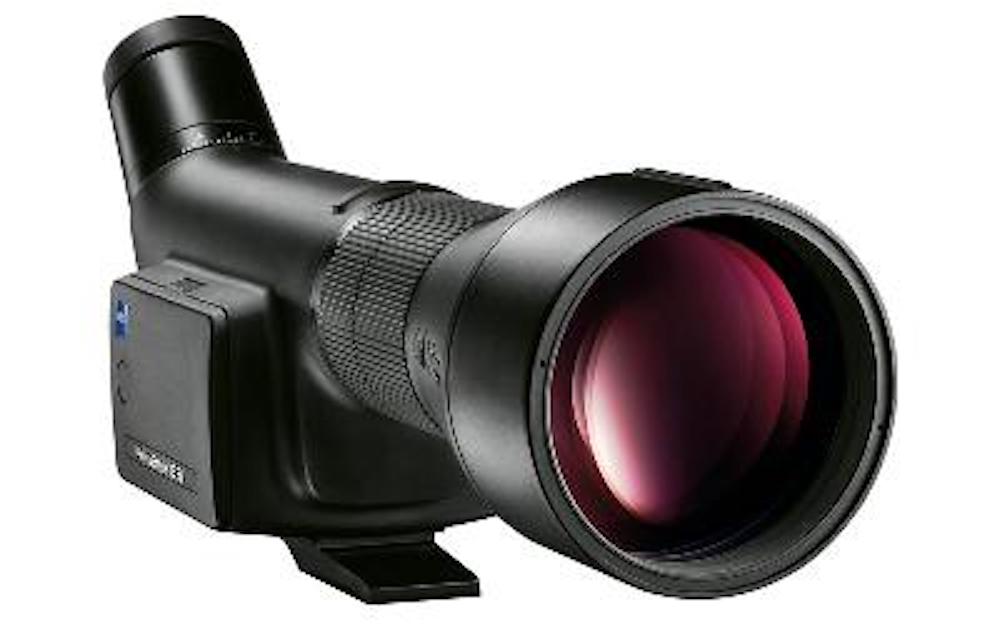
Surely there’s a market for something with a 1” or 4/3 sensor and a built-in long lens? The crop factor means the lens could be decently compact and have reasonable power. What about something like Nikon’s 300mm f4 PF attached to a 1” sensor? Not needing the full-frame coverage, it could be even more compact and gain some zoom. A 10-30 power zoom (or so) in something the size of a standard 65mm spotting scope that took decent pictures on a 1” sensor could be appealing to a lot of birders, and shouldn’t be too difficult. Just using an off the shelf 100-400mm lens gets to 6-24 power on a 1” sensor. How hard would it be to put a sensor and a viewfinder on one? Maybe the fairly compact (and reasonably priced) Sigma Contemporary if not some sort of diffractive lens? The Sony RX10 series comes close, but it’s only 12 power at the long end. I’m thinking of something that goes to 24 power or more, trading off wide-angle and normal capability, and has an interface more like a spotting scope.
Panasonic and RED both released new “box” style cinema cameras. These require a lot of accessories before they’ll make a movie (they ship with no viewfinder and no screen), but they offer the cinematographer huge versatility in how they rig them out. The Panasonic BGH-1 is pretty much a GH5s with a couple of image quality upgrades in a box to rig to your crane, drone or gimbal, with Ethernet and SDI output as well as everything the GH5s has. RED breaks new pricing ground (for them) with the new $6000 Komodo. REDs have always been box cameras, and rigging one to work as a shoulder or tripod-mounted camera tends to come close to doubling the base price.
The Komodo brings RED into an easier range for indie filmmakers. In a departure for RED, it actually includes both a small screen and a shutter button – you could conceivably throw a lens and a battery on it and make a movie. The ergonomics wouldn’t be great, and you’d almost certainly want at least a better screen and probably a grip or tripod-based controller, but it’s more usable with fewer accessories than previous REDs. The one oddity is that it has a Canon RF mount, but actually won’t take RF lenses (it only accepts adapters to EF or anything else you want). RED promises RF compatibility with future firmware, but, until then, it’s the one and only camera that always uses an adapter.
In a normal year, we would be approaching PhotoPlus next week, and I suspect that this gaggle of announcements are probably largely the PhotoPlus traffic. Could Canon or Sony have a few more lenses for us – either right when PhotoPlus should have been or a few weeks later? Could Nikon even have a lens or two left to go this year? I can’t think of what major body might be left – maybe a Pentax APS-C DSLR (they seem to have been sitting on one for a while). A GFX would be a wonderful surprise, but why wouldn’t Fujifilm have released one along with the X-S10 if it was close?
This week is also Adobe MAX, and there was a somewhat substantive update to Lightroom Classic, which suggests that it will survive at least one more year. The big new feature is a video-inspired color grading tool, which should join DxO and Capture One as the converters with the best selective color editing. It works somewhat differently from the DxO and C1 strengths, which adjust individual color ranges – the Adobe version acts more like a very sophisticated White Balance tool with the ability to adjust shadows, midtones and highlights separately. What’s more important than the new feature and a few other smaller improvements is that this is a significant update – they seem more committed to Lightroom Classic than we’ve seen in a few years. The other judgement point will be whether Classic appears natively on Apple Silicon Macs. If it is translated right away, it’s probably in decent shape, while I’d be more worried about it if it runs only in emulation while Lightroom CC is native.
As is usual for MAX, there were a slew of updates to all sorts of Adobe products. Of most interest to photographers (besides Lightroom Classic) is a collection of updates to Photoshop. The headline feature is Neural Filters, a selection of computational photography tools that can alter things like the apparent direction of light in an image and even the age of a portrait subject. They are mostly portrait retouching tools, and many of them are similar to the things smartphones have been doing for a few years now. Some are still in beta, while others have reached a “version 1.0” state. I haven’t had time to fool with them. Another improvement is smarter selection edges, intended to deal better with hair. Adobe’s been demonstrating it on a lion’s mane, with impressive results. There are also a couple of more gimmicky features, including a Luminar-style sky replacement tool. Everything in Photoshop is focused on AI-driven features, ranging from gimmicks to the truly useful. Premiere Pro gained the ability to read ProRes files natively, useful as an increasing number of manufacturers torn to ProRes as an intermediate capture format between highly compressed MPEG and AVCHD and full-on raw capture.
Other software manufacturers also like to time things against Adobe MAX, and I’d be surprised not to see a couple of decent sized software announcements over the next couple of weeks, and maybe some editing hardware as well. By far the largest recent release I am aware of is DxO PhotoLab 4, which uses AI in a different way than anything else I’m aware of. Their DeepPrime technology uses neural networks to enhance demosaicing and noise reduction, and the improvement is very real. According to DxO, the biggest improvements come on files that weren’t great to begin with – files from older cameras, small sensors or at high ISOs. The only files I’ve tried it with yet are the exact opposite – Z7 and A7r IV files taken with great lenses at low ISO. The improvement is subtle, but noticeable even on very high quality originals – I’ll certainly use it for big prints. It is hard to make a fundamental improvement to raw conversion at this stage, but DxO seems to have done it. More soon, as I have a better chance to fool with it. The images in the Otus review were processed with DeepPrime, and I also exported them with regular processing – in every case, the DeepPrime version won.
DeepPrime DOES bring even powerful computers to their knees – it’s GPU dependent, and I don’t have anything with a huge GPU around here. On my recent, powerful MacBook Pro (reviewed here last year), it takes about three or four times as long to export as standard processing (it’s applied at export and doesn’t affect any other aspect of performance). It would be worth trying on something with a serious GPU – either a Mac Pro or a PC gaming rig. To my eye, it’s worth it, especially in a low-volume type of work. I’m not AT ALL sure I’d want to pay the speed penalty processing a wedding (or does that mean that wedding photographers should be looking at computers with big GPUs)?
No word from Phase One yet – their latest version of Capture One should be along soon – it’s usually updated during PhotoPlus/MAX season. I’d be surprised not to see it in the next month sometime. Like everything else, it’s likely to get AI/computational photography features – how will Phase One implement them? Skylum is so proud of their AI integration that they’ve called their latest (upcoming) version LuminarAI. They’ve improved their sky replacement tool and added several new AI tools. ON1 is also focusing heavily on AI, adding sky replacement and more. I haven’t had a chance to try either of these packages in their newest version (and I don’t know what’s coming in Capture One).
The releases should calm down soon, and I’ll be writing up the rest of the fleet of lenses that have found their way through here, as well as a review of the Eizo CS2740 monitor.
Dan Wells
October 2020
You May Also Enjoy...
Hand’s On: new Sony A9III and Sony 50mm G Master, Sony 85mm G Master, Sony 75-350mm APS lenses
A quick hands on look at Sony A9iii and the Sony APS 75-350mm len
The best wide-angle zoom in the world? The Fujinon G5 20-35mm f4 R WR reviewed.
FUJIFILM GF 20-35mm f/4 R WR L
